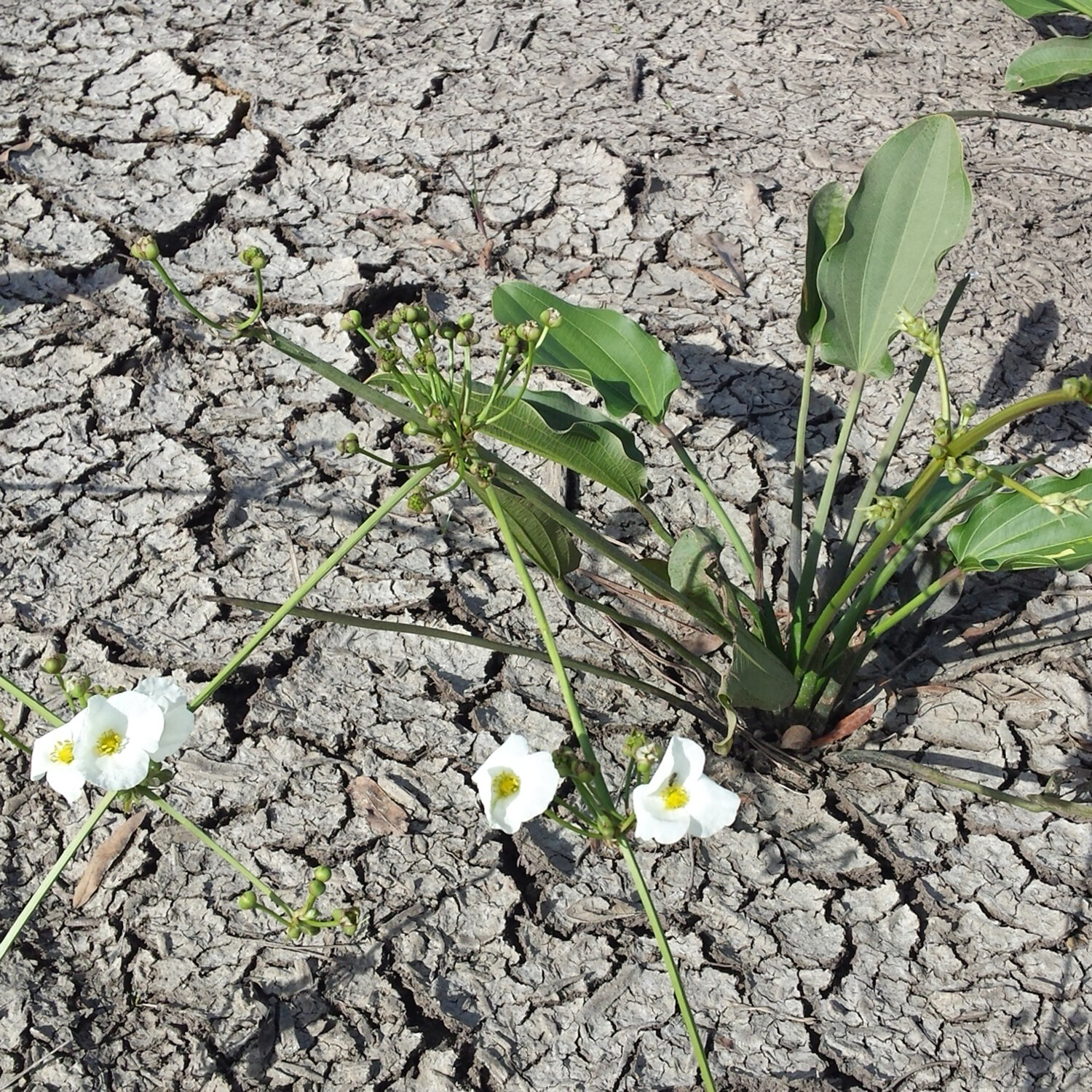Arrowheads & Allies
(the Alismataceae family)
Freshwater plants bearing three-petaled flowers. Contact us for additional species.
Creeping burhead
(Echinodorus cordifolius)
This Burhead with large spoon-shaped leaves “walks” by producing stalks of white flowers which grow longer and longer, until they arch down to the ground or water. New plants develop along the stalk wherever it touches down. Creeping burhead does well in part shade and sunny conditions, and likes consistently wet soil or standing water up to 6”. In fact, it likes to have its dormant rosette completely submerged in winter.
ECCO3, OBL
Bulltongue arrowhead
(Sagittaria lancifolia)
This is the tallest of our Gulf Coast native Arrowheads, with white blossoms standing above the leaves on 3’ flower stalks. It’s a statuesque plant. Bulltongue is perennial on the Gulf coast, and will come back from its chunky rhizome each spring. It is tolerant of slightly brackish water up to 3.5 ppt (parts per thousand) of salt.
SALA, OBL
Delta arrowhead
(Sagittaria platyphylla)
A quick, important colonizer of new wetlands, this member of the Arrowhead family does not have arrow-shaped leaves. It holds its flowers below the leaves and has triangular stems in cross section, which distinguishes it from other arrowheads. Waterfowl enjoy browsing this species, which gives it another common name: Delta duck potato.
SAPL, OBL
About the Plant Codes
The US Department of Agriculture codes plant species with a “symbol” that begins with the first two letters of the botanical name. Thus the symbol for Delta arrowhead, Sagittaria platyphylla, is SAPL. Wetland Indicator Status is the chance of a species being found in a wetland and non-wetland setting. The main use is to determine if a community of plants constitutes a wetland, and what the extents of the wetland may be (i.e., wetland delineation). Green Star specializes in OBL, FACW, and FAC species.



